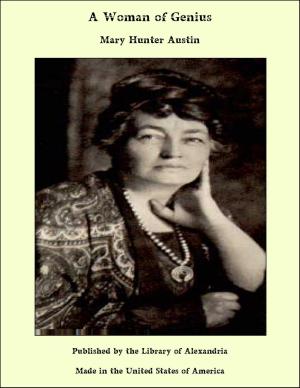One in a Thousand: The Days of Henri Quatre
Nonfiction, Religion & Spirituality, New Age, History, Fiction & Literature| Author: | George Payne Rainsford James | ISBN: | 9781465607355 |
| Publisher: | Library of Alexandria | Publication: | March 8, 2015 |
| Imprint: | Language: | English |
| Author: | George Payne Rainsford James |
| ISBN: | 9781465607355 |
| Publisher: | Library of Alexandria |
| Publication: | March 8, 2015 |
| Imprint: | |
| Language: | English |
George Payne Rainsford James, Historiographer Royal to King William IV., was born in London in the first year of the nineteenth century, and died at Venice in 1860. His comparatively short life was exceptionally full and active. He was historian, politician and traveller, the reputed author of upwards of a hundred novels, the compiler and editor of nearly half as many volumes of letters, memoirs, and biographies, a poet and a pamphleteer, and, during the last ten years of his life, British Consul successively in Massachusetts, Norfolk (Virginia), and Venice. He was on terms of friendship with most of the eminent men of his day. Scott, on whose style he founded his own, encouraged him to persevere in his career as a novelist; Washington Irving admired him, and Walter Savage Landor composed an epitaph to his memory. He achieved the distinction of being twice burlesqued by Thackeray, and two columns are devoted to an account of him in the new "Dictionary of National Biography." Each generation follows its own gods, and G. P. R. James was, perhaps, too prolific an author to maintain the popularity which made him "in some ways the most successful novelist of his time." But his work bears selection and revival. It possesses the qualities of seriousness and interest; his best historical novels are faithful in setting and free in movement. His narrative is clear, his history conscientious, and his plots are well-conceived. English learning and literature are enriched by the work of this writer, who made vivid every epoch in the world's history by the charm of his romance. "The Man at Arms" tells the story of Jarnac and Moncontour, and ends with the fatal day of St. Bartholomew. "Henry of Guise" takes up the history of the Religious Wars, with sympathy chiefly for the Catholics, and closes with the assassination of that great soldier; then "One in a Thousand" resumes the tale just before the murder of Henry III. and the battle of Ivry. The two former are rather short and remarkably brisk in movement, this one is somewhat longer and much more elaborate. It has a complex plot, a large crowd of characters from both factious, and has evidently been worked out with, perhaps, less vivacity but more pains. "Willingly" says the novelist, "we turn once more from the dull, dry page of history ... to the more entertaining and instructive accidents and adventures of the individual characters which, with somewhat less skill than that of a Philidore, we have been moving about on the little chess-board before us." There is an ironical undermeaning here; but so far as James suggests that his flagrant romanticism, mysterious dwarfs, princesses disguised as pages, and battles prefigured in the thunder-clouds are more interesting than his retelling of historical events and careful portraiture of historical people, we must venture to dissent from him. The fiction is simply his favourite story of a wealthy heiress held out as a bait by the heads of rival factions to attract the allegiance of two powerful nobles. We feel not the slightest anxiety as to the ultimate happiness of the fair lady and the blameless lover, or the appropriate fate of their enemies. On the other hand, the intimate picture of the Leaguers at Paris, of the headquarters of Henry Quatre, and more particularly the speaking likeness of the Duke de Mayenne, the head of the Guises, are keenly interesting and real contributions to the history of those times. Though the stage effects are well done, this shows far more talent. With all his fierce ambition, his lack of scruple, and his froward temper, the Duke stands out as a man, and is infinitely more alive than the purely romantic characters; furthermore, the family likeness between the various members of that powerful house, the Guises, is admirably brought out in this series of romances, and the figure of Henry of Navarre is not less well done, though he is a personage that we meet with less rarely either in James's novels or in those of other historical raconteurs.
George Payne Rainsford James, Historiographer Royal to King William IV., was born in London in the first year of the nineteenth century, and died at Venice in 1860. His comparatively short life was exceptionally full and active. He was historian, politician and traveller, the reputed author of upwards of a hundred novels, the compiler and editor of nearly half as many volumes of letters, memoirs, and biographies, a poet and a pamphleteer, and, during the last ten years of his life, British Consul successively in Massachusetts, Norfolk (Virginia), and Venice. He was on terms of friendship with most of the eminent men of his day. Scott, on whose style he founded his own, encouraged him to persevere in his career as a novelist; Washington Irving admired him, and Walter Savage Landor composed an epitaph to his memory. He achieved the distinction of being twice burlesqued by Thackeray, and two columns are devoted to an account of him in the new "Dictionary of National Biography." Each generation follows its own gods, and G. P. R. James was, perhaps, too prolific an author to maintain the popularity which made him "in some ways the most successful novelist of his time." But his work bears selection and revival. It possesses the qualities of seriousness and interest; his best historical novels are faithful in setting and free in movement. His narrative is clear, his history conscientious, and his plots are well-conceived. English learning and literature are enriched by the work of this writer, who made vivid every epoch in the world's history by the charm of his romance. "The Man at Arms" tells the story of Jarnac and Moncontour, and ends with the fatal day of St. Bartholomew. "Henry of Guise" takes up the history of the Religious Wars, with sympathy chiefly for the Catholics, and closes with the assassination of that great soldier; then "One in a Thousand" resumes the tale just before the murder of Henry III. and the battle of Ivry. The two former are rather short and remarkably brisk in movement, this one is somewhat longer and much more elaborate. It has a complex plot, a large crowd of characters from both factious, and has evidently been worked out with, perhaps, less vivacity but more pains. "Willingly" says the novelist, "we turn once more from the dull, dry page of history ... to the more entertaining and instructive accidents and adventures of the individual characters which, with somewhat less skill than that of a Philidore, we have been moving about on the little chess-board before us." There is an ironical undermeaning here; but so far as James suggests that his flagrant romanticism, mysterious dwarfs, princesses disguised as pages, and battles prefigured in the thunder-clouds are more interesting than his retelling of historical events and careful portraiture of historical people, we must venture to dissent from him. The fiction is simply his favourite story of a wealthy heiress held out as a bait by the heads of rival factions to attract the allegiance of two powerful nobles. We feel not the slightest anxiety as to the ultimate happiness of the fair lady and the blameless lover, or the appropriate fate of their enemies. On the other hand, the intimate picture of the Leaguers at Paris, of the headquarters of Henry Quatre, and more particularly the speaking likeness of the Duke de Mayenne, the head of the Guises, are keenly interesting and real contributions to the history of those times. Though the stage effects are well done, this shows far more talent. With all his fierce ambition, his lack of scruple, and his froward temper, the Duke stands out as a man, and is infinitely more alive than the purely romantic characters; furthermore, the family likeness between the various members of that powerful house, the Guises, is admirably brought out in this series of romances, and the figure of Henry of Navarre is not less well done, though he is a personage that we meet with less rarely either in James's novels or in those of other historical raconteurs.















